Munich High End 2023 Show Highlights
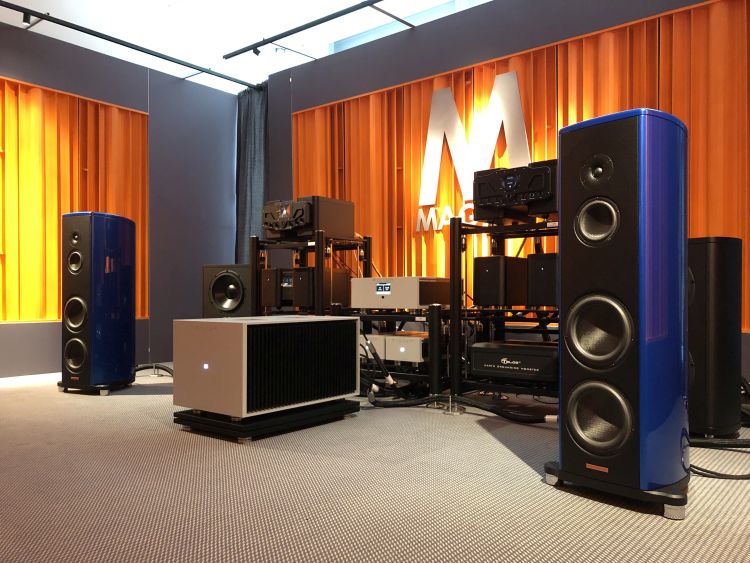
YG Acoustics with Burmester
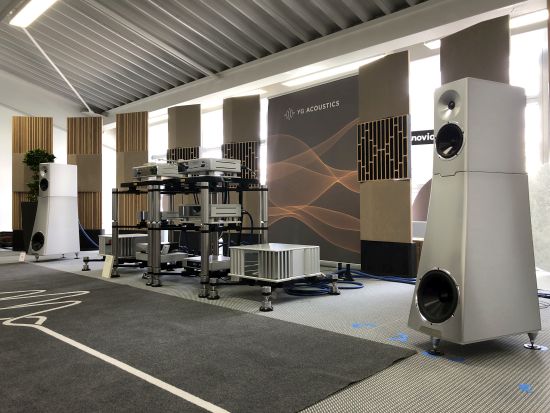
YG Acoustics also had a premiere with their new 3-series Reference line that covers all Reference models. The new Hailey 3 has the same dimensions as before but with a different constrained-layer cabinet construction and a new “Lattice hybrid tweeter with advanced airframe” tweeter.
When I visited on Saturday, a pair of Hailey 3 was set up with a full Burmester system. Speaker placement was rather wide, but as always on such shows, you can safely assume that this was done to combat room peculiarities. In any event, the system sounded super-tight, fast, very linear, squeaky clean, and very expressive. The resolution and transparency were top notch and I admired the utter neutrality and the total lack of compression.
But although I personally prefer speakers that are neutral to lively, the YGs lean a little further toward clean and cool. Cerebrally, they perform on the highest level, but emotionally, one could say the system can lack a little soul and flow. Nevertheless, these are very clearly very capable speakers, and in another room or with different electronics, they may prove to perform very differently. To each their own, of course, but what I really appreciate about YG is that they stay true to their course, rather than joining the trend of producing ever warmer, smoother, and richer-sounding products.
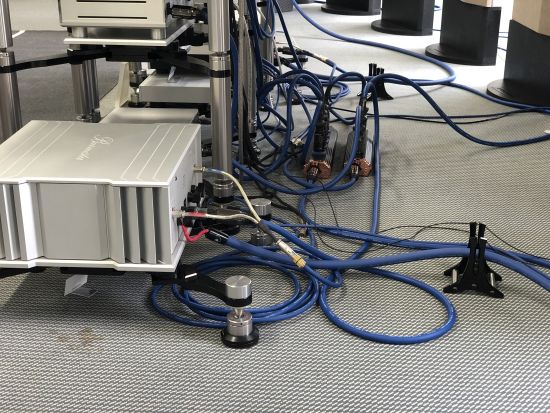
All Cardas Clear cables.
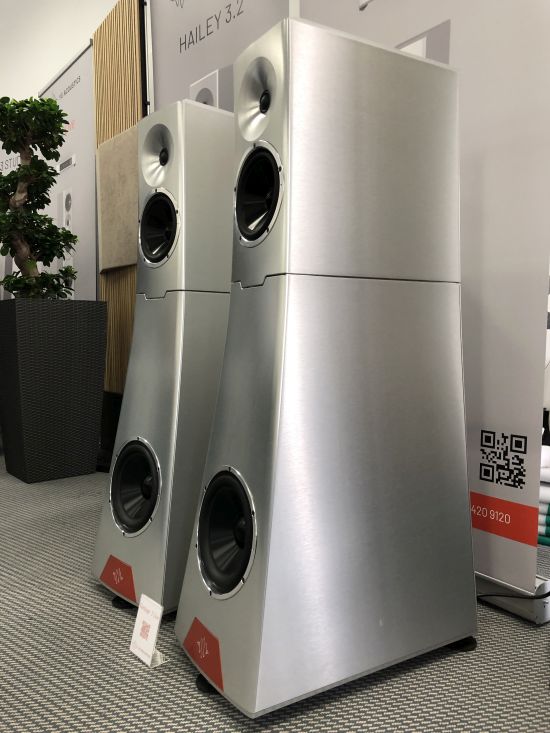
The new Vantage 3 has the same dimensions as its predecessor but with a different constrained-layer cabinet construction and a new tweeter. While still nowhere near cheap, the Vantage could be “attainable” for the serious music listener while offering almost Hailey-level performance.
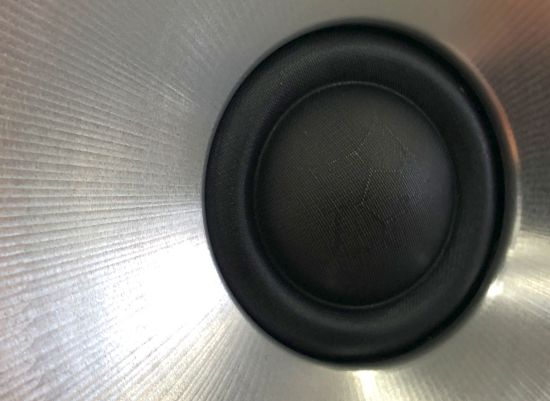
With the 3 series, both Vantage and Haily are now fitted with the same Lattice hybrid tweeter with advanced airframe.
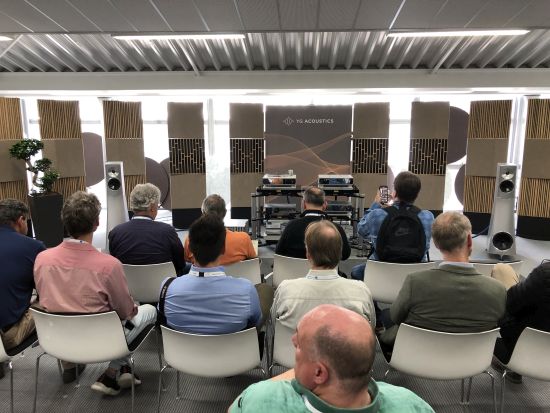
Fink Team Borg Episode 2 with Soul Note
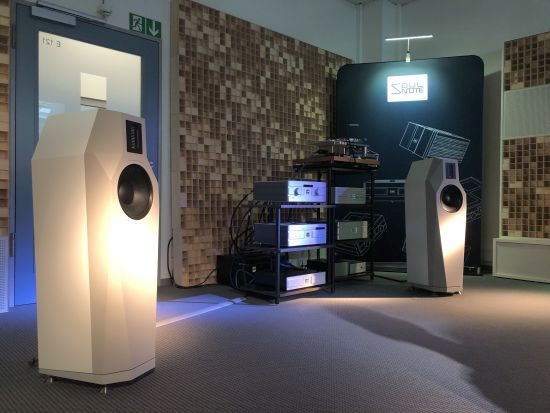
Fink Team debuted the new Borg Episode 2 speaker with Soul Note equipment. The Episode 2 is a two-way floor standing design featuring a 10.25-inch stiff-surround high-power mid/bass driver and an Air Motion Transformer (AMT) tweeter.
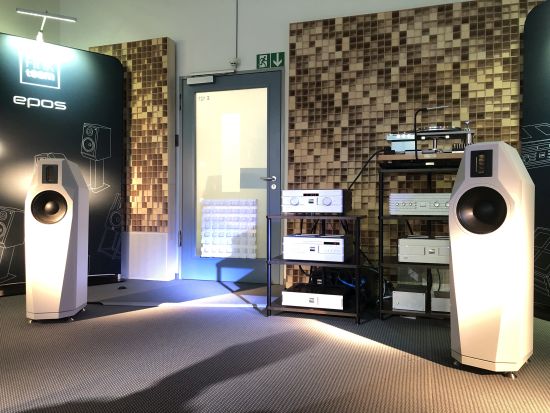
AMT drivers have a special place in my heart and in this implementation, that love was only confounded. Even though the room and placement were peculiar and I don’t think the speakers were allowed very good conditions, nevertheless, they performed in a superbly coherent, fast, and nimble manner with beautifully delicate and airy treble. Importantly, I never felt that the bass was disconnected from the ribbon, or behaving with a different character, which I know is one of the hardest things to achieve. As a Ribbon fan, as well as a Magico fan, I’m interested in getting a closer and longer listen to these speakers.
Alsyvox with Pilium, Lampizator, and Taiko Audio
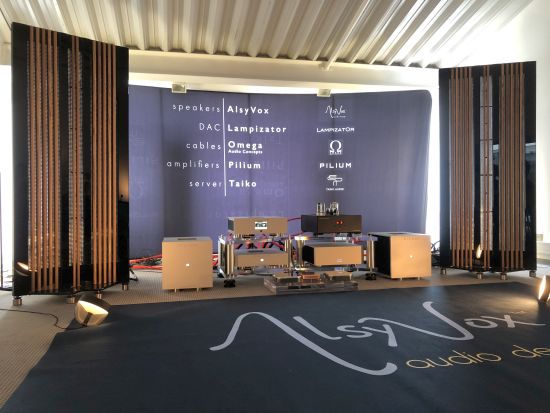
Since I work for Taiko Audio in addition to writing for HFA, there’s not too much I can say about this system without risking a conflict of interest, but given what I heard at this show, I can’t very well not write about it. Take it with as much salt as you like.
When visiting on Sunday, I managed to obtain a front-row seat, which was a pleasant surprise given the room’s popularity. While I was enamored with the sound of the Magico S3, I have to hand it to the Alsyvox/Pilium/Taiko Audio system for also being mightily impressive and easily one of the best sounds of the show.
With the Taiko Audio Extreme Music server at its core, along with the Taiko Audio Extreme Switch and DC Power Distributor, the system performed in a powerful, crisp, and well-textured, as well as articulate, fast, expressive, and dynamic manner, yet without any edge or unnatural hardness. The components were clearly playing in a hugely synergistic manner, providing coherence, precision, and transparency as well as a timbrally full-blooded rendition and instantly establishing an engaging musical and emotional connection.
Of the full-range ribbon panels that I heard during the show, these were easily the most impactful and dynamic and just plain most realistic.
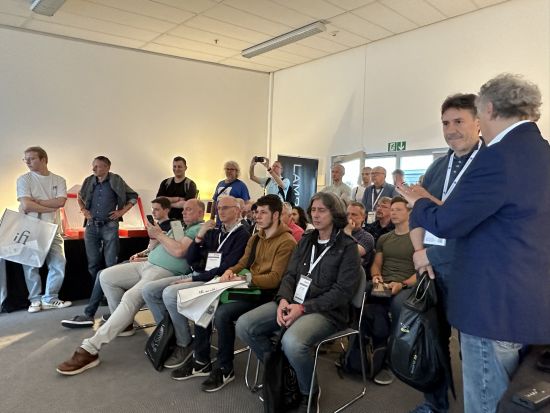
I heard some people say this system sounds lean but that’s not how I hear it, per se. Of course, full-range ribbon speakers do sound very different from typical dynamic cabinet speakers, and they are indeed relatively leaner. To a large extent, I feel this can be attributed to there being no cabinet-induced fullness or coloration, nor fat or bloom added to the sound. To my ears, this is, on many accounts, a lot like live music. If anything, more like the real thing in fact, than ticking each and every audiophile parameter, as I feel the Magicos do.
In any event, I’ve also heard the very same Alsyvox models before in the Taiko showroom in Oldenzaal and in that location, and with Atma-Sphere OTL amplifiers, they sounded remarkably robust and quite full-bodied in the bass. But I’ll add that no one will ever mistake them for, say, Wilson Audio speakers. These are just very different breeds.
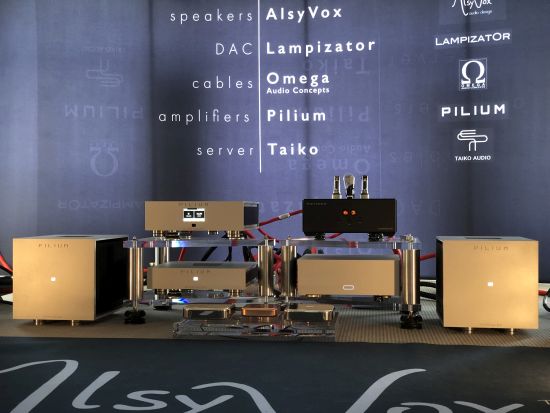
The system consisted of Pilium pre-and power amplifiers, a Taiko Audio Extreme Music Server, Lampizator Horizon DAC, and a new Taiko Audio trio, consisting of a proprietary Extreme Router, Extreme Switch, and Extreme DC Power Distributor.

The copper unit in the middle is the Extreme DC Power Distributor which takes a single power input and divides it over multiple outputs. Uniquely, it offers user-selectable filter options to enable a neutral sound, a richer, more expansive, and more organic sound, or a more focused and more analytical sound.

This configuration is just one of many possibilities. The unit on the right is for display purposes and not connected, but there’s more Taiko “Extremeness” going on behind the main racks.
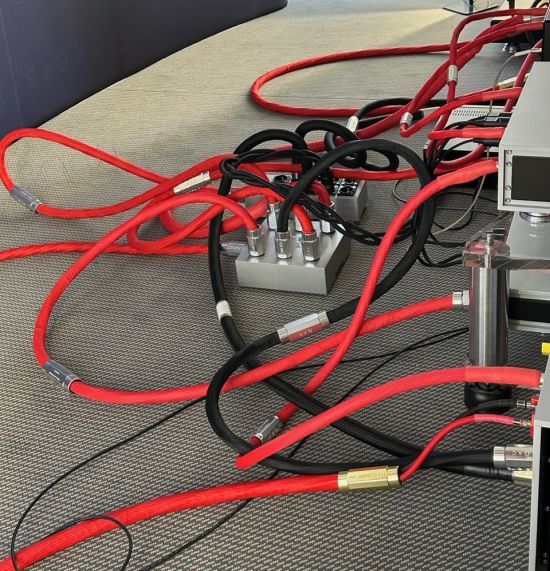
All Omega Audio Concepts cabling, complete with Omega Audio Concepts power distributors.
As Emile later unveiled, the Taiko Audio Extreme Router was not used and neither was XDMS (Taiko’s upcoming proprietary server/player software) because of the ”large” number of “deejays” and given that there is currently no XDMS remote for iPhones. What was used was Roon with 2 Taiko Audio Extreme DC distributors/filters, one for the switch and one to augment the Fritz Box router provided by the MOC.
Next: Stein
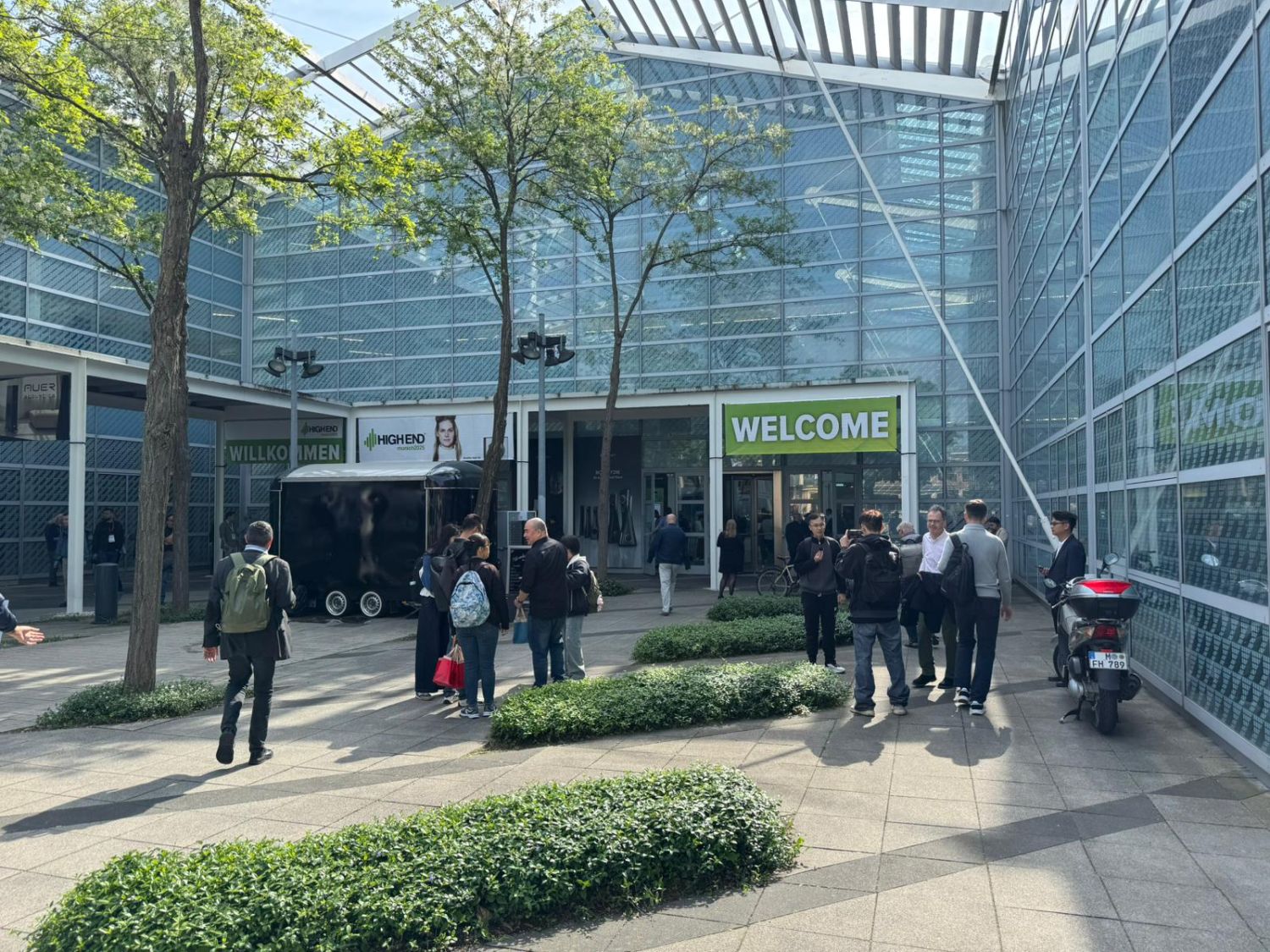
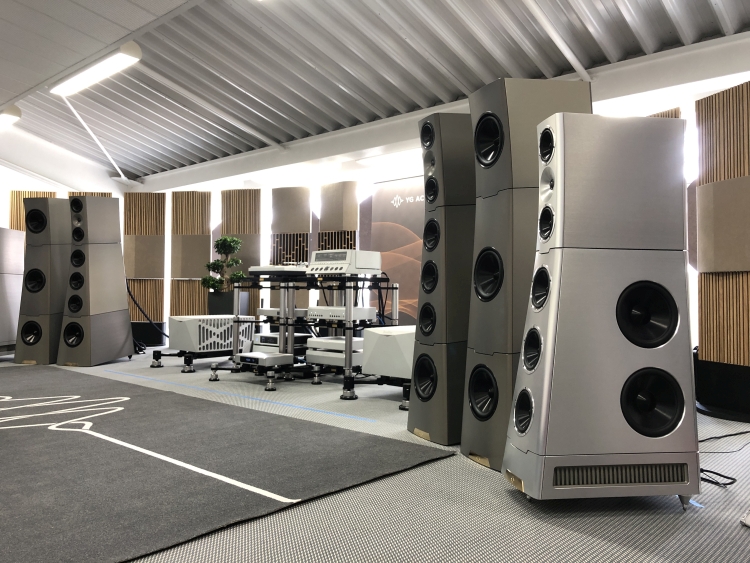



Hi Christiaan,
just read your impressions: well written as always.
The visit to the Marriott, the big Marco Serri loudspeakers… and the big electronics so “fluid” and “harmonic”… transparent, coherent, linear, open, delicate and airy and the bass was deep but agile, very precise and absolutely never overbearing (your words)…
Guess how the hall was “prepared” (wired)
😉
Keep it up!
Thanks, Luca:-) I have not noticed the cable brand(s) in the Marco Serri system, but I’m now thinking maybe it was Faber’s cable?
Hi all, we confirm the wiring and setup were by Faber’s Cables, which we publicly thank for their contribution
Marco Serri Design
You win!
:))
Without wanting to do “free propaganda” here, as you could hear and despite the “massive” speakers and a complex system, in a hotel room that was not perfectly “adequate”, the sound was “graceful”, especially the digital one.
Better than a thousand words (practically “blindly”), you tried what I told you about the ground connection, the masses and so on.
Ask me more… “privately”…
😉
Thank you
Hi Christiaan,
I really enjoy reading your HFA commentary. You have a talent for making complex topics easy to understand and a real gift for describing in language something as indescribable as music.
In your recent show report about the Taiko/Alsyvox room you wrote, “But I’ll add that no one will ever mistake them for, say, Wilson Audio speakers. These are just very different breeds.”
Would you care to expand on this? I’ve never heard the Alsyvox speakers though in the past and very distant past I’ve owned Magnaplanar planar magnetics and Acoustat electrostatics. I do however own Wilson Alexx speakers, so I’m familiar with Darryl Wilson’s sound (I have to say, I was never in love with his father Dave’s designs’ sound signature). To triangulate further with what else I’m familiar with in the high-end, prior to the Alexx I lived with Sonus Faber Aidas for some years.
Thanks very much,
Steve Z
Hi Steve, thanks for the kind words!
I’ve taken Wilson as an example as they are a well-known and iconic brand and because in my mind, they are in many ways diametrically opposed to the typical dipole magnetostatic ribbon panel sound.
Speaking from experience having owned Wilson WP8 and having heard other older, newer, and current Wilsons in various places in the Netherlands, I find that these speakers tend to sound rather fulsome in the bass, especially the upper bass. This is true in relatively large (for Dutch terms) spaces and usually more so in smaller spaces. In part this may be by design, but it might also partially be a result of the speakers being developed primarily for American residences which tend to be large and constructed in large part from wood and drywall. In the Netherlands, these speakers are used in relatively small rooms with concrete floors and walls which often create rather serious room modes that are hard to address, especially when using Wilsons. This can lead to a relatively bombastic sound that I know many people actually enjoy and might perceive as natural. I will gladly admit that there is indeed a very nice “live” aspect to the Wilson sound that I quite enjoy.
Naturally, it’s of course not just Wilson that can interact quite strongly with room modes but basically all dynamic speakers and predominantly the ported ones. What also made me use Wilson as an example is that after enjoying Magnepan, Apogee, and Martin Logan speakers with no issues, I was sadly unable to get my Wilsons to sound linear in my inherently imperfect room, which made me move on to closed cabinet speakers, currently Magicos, which work much better in my then-rather challenged environment.
So, how does this relate to magnetostatic ribbon speakers? Well, due to their dipole in-phase/out-of-phase nature and figure-of-8-radiation pattern, speakers of this kind tend to agitate room modes very significantly less so. So much so, in fact, that one could be entirely unaware of existing acoustical issues in a given room, when using Magnepan, Apogee, Diptyque, Analysis, or indeed Alsyvox speakers.
If one is not accustomed to the sound of truly clean bass, hearing it for the first time from a speaker like the aforementioned dipoles may lead one to believe the sound is lean, thin, lacking body, or tonality. While some of the aforementioned brands could objectively indeed be regarded to sound less full-bodied, robust, and tonally saturated as the average well-designed dynamic speaker, I can’t accuse Alsyvox of any of this. To me, they sound very realistic and actually achieve a balance that is as close to neutral as I have heard it from a speaker. To a large extent, you can think of ribbon speakers as listening to headphones. There will be deep, articulate, precise bass, and it can even be rather powerful, but it won’t be the same as from a big dynamic speaker. Now image that “ideal” headphone sound and extrapolate it to coming from a speaker, but with greater dynamic impact. That’s how I would describe the Alsyvox speakers.
Ultimately, though, and this is the point of the comparison that I was making in the show report, I would propose that none of the panel speakers mentioned will sound quite as voluptuous, gut-wrenching, and full-bodied as a Wilson, even when the latter is setup in an ideal room. In the end, it is to some extent a relative matter and that’s what I was trying to convey.
Thanks very much for taking the time, Christiaan. Very helpful, as always!
Great commentary as usual, it’s interesting what you say about the new Magico’s S3’s having heard a variety of Magicos over the years i find them a bit cold in places. Obviously amplification plays a big role in this but will be interesting to hear what they are like in a ones listening space. I sadly didn’t get into this room too much to see in one day. Agree on the Wilsons, impressive in a big space, but more cut out for the US market.
Did you get to the TIDAL room? that was best for me that i heard all day, especially the Tidal for Bugatti. Different level in my book to most things there, first time on hearing this. Not sure about the totally polished cabinets but the sound was amazing.
keep up the good work! love reading the reviews.
Miami
Hi Miami, The assessment of the quality/beauty/realism of sound reproduction really is quite personal. I believe that since hifi is inherently never a perfect representation of reality, we as individuals choose which aspects of the sound reprodution we associate with being appealing or sounding realistic. To me, these may be a different set of aspects than to you, or someone else. I know that there are people who find Magicos to sound relatively cold. To a large extent, I think this is based on listening to Q-series models which are indeed incredibly revealing and can be fussy. I would not label S-series and M-series Magicos as cold, but I know that there are people who still hear them as such. The new S3 sounds to me like a hybrid between the S-series, Q-series, and M-series. It has exrtremely low coloration and distortion, and as demonstrated in Munich this year, the speaker can sound remarkably clean and coherent. To an extent, this is also the result of cleverly used subs and considerably more ideal room conditions than normal. But what I found particularly compelling was that there was never any edge or hardness and the speakers managed to sound fast and accurate as well as gentle and refined. Ultimately, the assessment of what constitutes great sound is in the ears of the beholder and it remains a matter of perspective and of personal preference. The variety of preferences and methods of reproduction, and the quest for finding the ever more ideal balance, is what keeps it interesting:-) Alas, the Bugatti was not playing when I visited the Tidal room.